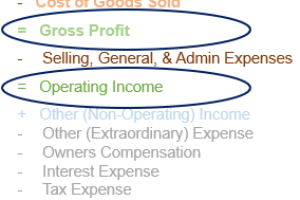
Synopsis
The best communicators speak their minds in a way that makes it safe for others to hear what they have to say and respond to it.
The most influential individuals in business are those who can get things done, and at the same time, build relationships of trust through their ability to communicate effectively. At the core of every successful conversation lies the free flow of relevant information called dialogue.
Effective communicators openly express their opinions, articulate their theories, and share their points of view, even when their ideas are controversial or unpopular. They are always alert when a conversation turns from a routine or harmless discussion into a crucial one.
The best communicators pay attention to the signs that suggest they aren’t communicating as they intend. They continually look for physical, emotional, and behavioral cues that tell them when they need to step back, slow down and even pause the conversation before things get out of hand.
When two or more people begin to communicate, they either work toward a mutually beneficial outcome in the conversation or don’t. You are likely to have a shared purpose in talking if shared caring exists about each other’s goals, interests, and values. Having a shared purpose for communicating is the entry condition of dialogue.
The best at dialogue speak their minds in a way that makes it safe for others to hear what they have to say and respond to it. You know that you don’t have a healthy climate for talking or even a good reason to communicate with each other if you find you or the people you are talking with, do the following:
-
- Move from dialogue to debate
- Defensiveness
- Hidden agenda
- Accusations
- Circling back to the same topic
When any of the above signs of disconnect exist, it is time to reexamine the goal of the communication. Allowing any of the above to continue during your attempted conversation will lead to misunderstanding at best and anger, most likely. For example, if you have made a mistake that has hurt others, start with an apology. An apology is a statement that sincerely expresses your sorrow for your role in causing or failing to prevent pain or difficulty to others.
Another sign to watch for is when you find yourself pressing hard to convince others that your way is best. If you find yourself doing this, back off your current approach and think about what you want for yourself, others, and the relationship. Likely you need to tone down your approach. Open yourself to the belief that others might have something you need to hear by asking them for their views.
The best communicators know that they can’t force others to dialogue. They also know that they can make it safer for others to enter into dialogue with them. They position others to talk with them by entering the conversation, ready to listen. They invite others to share what is on their minds. They are curious to know what another is thinking since they already know what they are thinking.
After completing a meaningful conversation, don’t waste away all the meaning you created by trusting your memories. Write down the details of conclusions, decisions, and assignments—particularly who does what by when.
Revisit your notes and assignments and hold people accountable. When someone fails to deliver on a promise, it is time for more dialogue. Discuss the issue openly. This is how you hold people accountable for the results of their actions. When you do this, you not only increase their motivation and ability to deliver on promises, you strengthen a culture of integrity.
Your financial results are an indicator of your communication effectiveness
Click here to get communication effectiveness confirmation. Within thirty-six hours of receipt of your multi-year P&L Statement and Balance Sheet, you will receive back by email your free assessment of how effectively you communicate with your employees based on your business results.
Are you a confident communicator?
Click the link below to get communication effectiveness confirmation. Within thirty-six hours of receipt of multi-year P&L Statement and Balance Sheet, you will receive back by email your free assessment of how effectively you communicate with your employees based on your business results.
FREE ASSESSMENT

